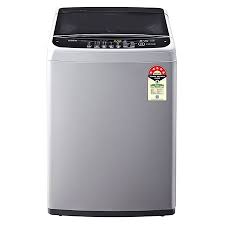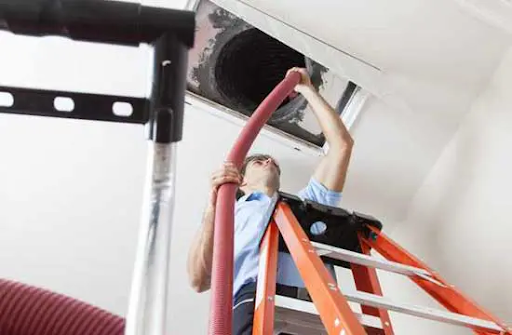Is a Washer-Dryer Combo Worth It? Pros and Cons

A washer-dryer combo is an all-in-one appliance designed to handle both washing and drying in a single unit. It is a solution that appeals especially to households with limited space, busy routines, or those looking for a seamless laundry process. However, before opting for one, it is important to weigh its advantages and disadvantages to decide whether it suits your needs.
Understanding Washer-Dryer Combos
Washer-dryer combos look much like front-load washing machines, but they have the added capability of drying clothes after the wash cycle. These machines don’t require manual transfer of clothes from a washer to a dryer, which can be convenient for many users. While the concept sounds efficient, the performance and practicality vary depending on usage patterns, household size, and expectations.
Pros of Washer-Dryer Combos
1. Space Saving
The most prominent advantage is the compact design. For people living in small apartments, studio flats, or homes with minimal utility space, having a single unit for both washing and drying helps optimize space. It eliminates the need for separate hookups and floor areas that two machines would require.
2. Convenience and Automation
These appliances simplify laundry by allowing users to load clothes, set a cycle, and retrieve dry garments with minimal intervention. It is especially useful for individuals with demanding schedules who prefer set-it-and-forget-it functionality.
3. Ideal for Light Laundry Loads
For small households or those who typically wash smaller loads, washer-dryer combos adequately perform. The drying capacity may be slightly lower than the washing capacity, but this isn’t a concern for occasional or light use.
4. No Venting Required
Most washer-dryer combos use condensation-based drying systems, which do not need external venting. This feature makes them suitable for installations in enclosed spaces like closets or kitchens without traditional dryer ventilation options.
5. Aesthetic and Integration Benefits
The unit integrates neatly into cabinetry and other built-in kitchen or laundry designs. It provides a streamlined look, especially in urban settings where visual minimalism is often a priority.
Cons of Washer-Dryer Combos
1. Longer Cycle Times
One of the major drawbacks is the extended duration of a full wash-and-dry cycle. Since drying usually takes longer than in standalone machines, a complete laundry session can take several hours, making it less efficient for users with large laundry loads or frequent wash cycles.
2. Lower Drying Efficiency
The drying function in combo units, especially those using water-cooled condensation drying, is often less effective than dedicated dryers. Clothes may come out slightly damp and may need additional hanging time, which can be inconvenient.
3. Limited Load Capacity
Though the wash capacity may match standalone washing machines, the drying capacity tends to be lower. Users often have to split loads or remove part of the wash before starting the drying cycle. This negates some of the convenience the unit is meant to offer.
4. Maintenance and Wear
Using a single drum and motor for both washing and drying can result in faster wear and tear. This can lead to increased maintenance needs or a shorter appliance lifespan compared to owning separate machines.
5. Not Suited for Large Households
For families that do laundry frequently and in bulk, washer-dryer combos can be impractical. The long cycle times, smaller drying capacity, and limited throughput make it tough to meet high-volume needs efficiently.
Energy and Water Use
Washer-dryer combos can consume more water during drying, especially those that use water to cool down the drying chamber. Additionally, longer run times may translate to higher energy usage. If you are comparing options based on long-term utility expenses, these factors need to be accounted for in addition to the washing machine price.
Who Should Consider a Washer-Dryer Combo?
- Urban Dwellers with Space Constraints: Those living in small homes or apartments where every square inch counts can benefit the most.
- Single Professionals or Couples: Light users who wash small loads less frequently will find the all-in-one solution convenient.
- Occasional Users: Those who only do laundry once a week or on weekends and don’t require large volumes of clothes to be cleaned at once.
- Renovators and Designers: If you’re looking to integrate appliances into cabinetry or maintain a clean aesthetic, this appliance can serve both functional and design purposes.
Who May Want to Avoid It?
- Large Families: High laundry volumes and frequent loads make the combo unit less practical due to time and capacity constraints.
- Power Users: Those who require quicker laundry turnarounds or frequently wash bulky items may find standalone machines more reliable.
- Performance-Oriented Users: If drying efficiency and garment care are critical, dedicated dryers with advanced fabric care technologies are typically more effective.
Factors to Consider Before Buying
- Laundry Load Size: Evaluate how much you typically wash and how often.
- Available Space: Determine where the appliance will be installed and whether ventilation is a concern.
- Utility Costs: Review how electricity and water consumption can impact your monthly bills.
- Maintenance Access: Check how easy it is to get the machine serviced in case of issues.
- Comparison with Traditional Machines: Compare features, limitations, and long-term usability with separate washers and dryers.
Conclusion
Washer-dryer combos offer a mix of benefits and trade-offs. They are useful for users with space limitations and basic laundry needs. However, their limitations in cycle duration, load capacity, and drying efficiency mean they may not be suitable for every household. When comparing options, it’s essential to go beyond the washing machine price and consider long-term convenience, energy usage, and overall utility. The decision ultimately depends on your laundry habits, available space, and performance expectations.



